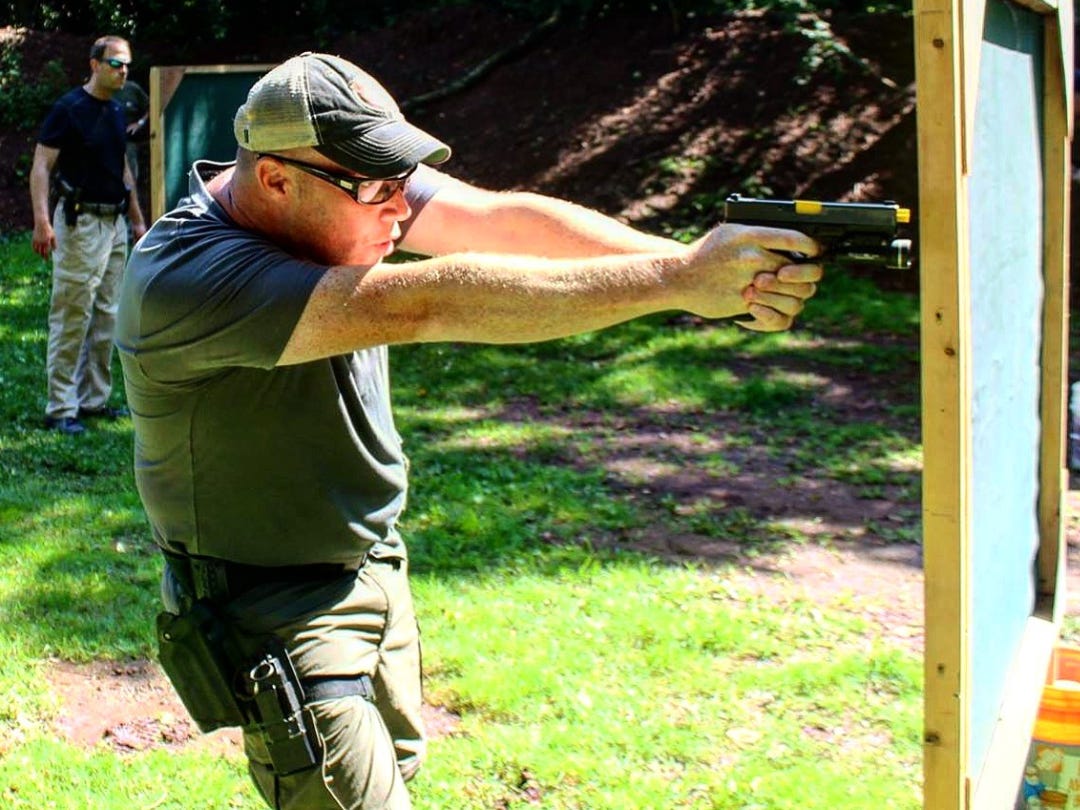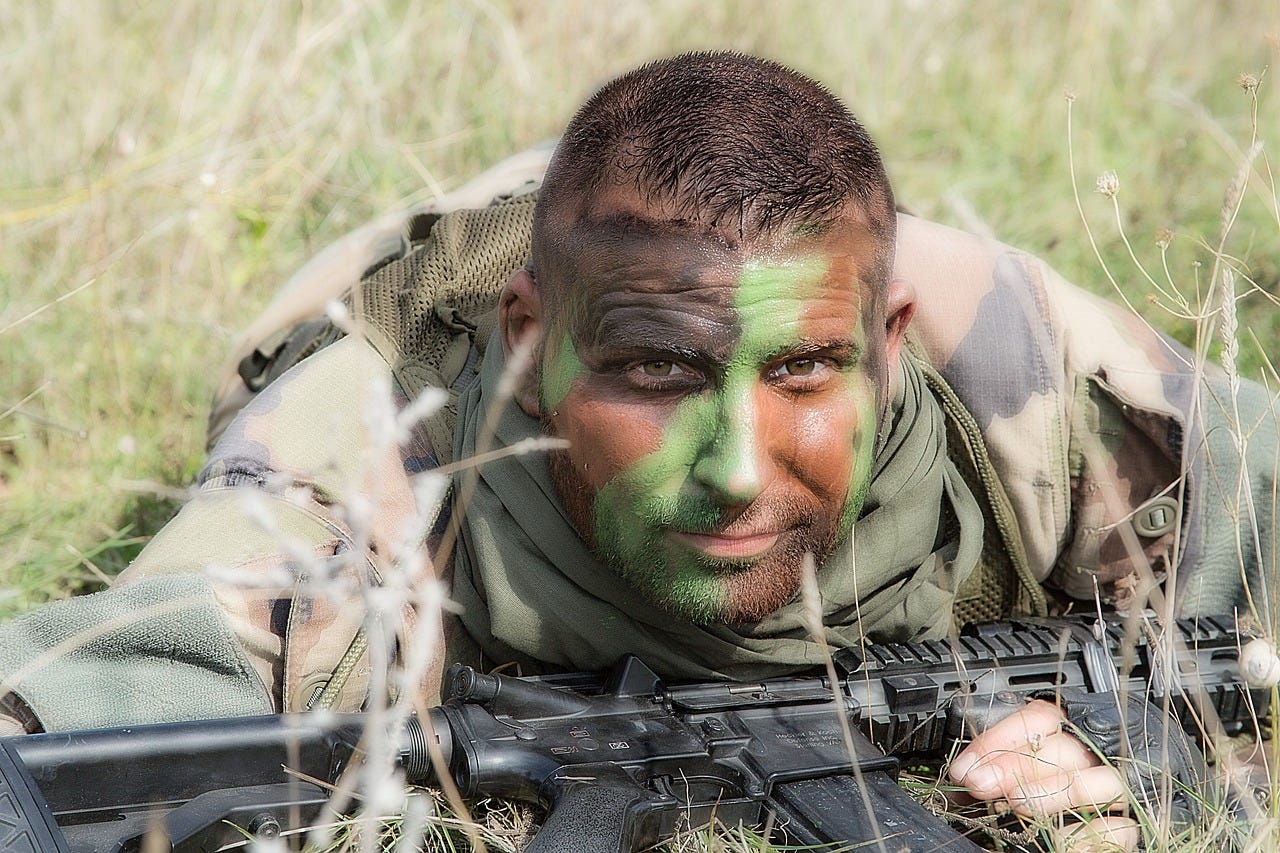Ambushes are fast, chaotic, and often deadly. How you react in those critical seconds can literally be the difference between life and death. In today’s episode, we’ll explore principles that can save your life in the midst of an ambush. We’ll cover:
♠️ The 3 options available to you if you find yourself caught in an ambush
♠️ Proper understanding of counter-ambush tactics
♠️ Considerations to level up your training to prepare you to face the ambush
Let’s go!
Surviving the Ambush: Reloaded
Today, we're diving into a critical topic: surviving an ambush. Whether you're on patrol in a third-world hellhole, walking the beat on duty, or just driving back home after work, the lessons we’ll discuss could be the difference between life and death.
This isn't about situational awareness or how to avoid an ambush. We've covered those topics in the past. Today, we’re focusing on what you can do once the ambush has started and you're actively under attack.
So first, let’s look at what we’re dealing with.
Recall from our episode titled, Ambush 101: Anatomy of a deadly attack, we discussed both the elements of and types of ambushes.
As a way of review, we discussed that there are four elements common to all ambushes, which are:
Concealment
Surprise
Lack of provocation
Violence of action
We also covered that ambushes attacks come in two varieties, the hasty (spontaneous) attack and the deliberate (planned) attack.
Again, read or listen to the earlier episode to get spun up on what these concepts mean.
Distance Matters
One thing I didn’t mention in the companion episode, but I’m going to talk about now, is the varying distances in which these attacks occur. And distance matter. A lot.
Ambushes can be executed at close range, which are referred to as near ambushes. In the military, we consider a near ambush to be any surprise attack that occurs at 35 meters (I’m ok if you think in yards instead of metric). That’s because effective range of a grenade thrown by an enemy combatant. This will become important later on, even if you’re not serving in the military.
Ambushes can also be conducted at longer distances, which is referred to in military parlance as a far ambush. Generally speaking, we consider a far ambush to be any attack executed at distances greater than 35 meters.
Ok, hang on to those pieces of information because I’m going to shift now to what your options are if you find yourself coming under an ambush attack.
The Reality of an Ambush
An ambush is chaos. It’s designed to overwhelm you, leaving no time to think. But survival isn’t just about instincts—it’s about applying principles rooted in timeless combat doctrine. No matter where you find yourself—on patrol, in traffic, or walking to your car—your response boils down to three options:
Break Contact.
Assault Through.
Counter-attack with a combination of both.
There’s no magic formula or secret technique. It’s straightforward, but execution is everything.
Key Principle: Mobility Equals Survivability
If you’re static, you become predictable, and predictability gets you killed. Let me repeat that: If you're static, you will be found, fixed, and terminated.
Let’s break that down with real-world examples:
Dallas, 2016
A brave officer took cover behind a concrete column during a gunman’s attack. Unfortunately, the gunman assaulted through, outmaneuvering him and delivering a fatal shot. The officer remained static, allowing the attacker to close the distance. See the video here.Pennsylvania, 2018
Two state troopers were engaged in a close-quarters gunfight. While heroic, their static positions left them vulnerable. The fight ended only when the attacker, wounded, broke contact and fled. This highlights the danger of failing to regain mobility in a gunfight. See it here.Arkansas, 2018
A sheriff’s deputy faced an ambush during a traffic stop. By breaking contact and moving around his squad car, he avoided being pinned down, forcing the attacker to retreat. Mobility allowed him to survive and maintain control. See it here.
The data consistently shows that those who stay mobile survive, while those who don’t, perish.
React to Ambush
Let’s dive deeper into your tactical options:
Breaking Contact
The first option is to break contact—to create distance and get to safety. But breaking contact doesn’t mean running aimlessly and it goes far beyond just “getting off the X.” It requires tactical movement:Use cover and/or concealment as you move
If you’re with others, communicate to coordinate your movements
This means there must be suppressive fire initiated to cover your move
Have an “eye for the terrain,” which means, you’ll looking for the next point of cover that you’ll be bounding to as needed to get out of the line of fire
Assaulting Through
If escape isn’t an option, you may need to assault through the ambush. This means advancing aggressively toward the threat to neutralize it. Assaulting through can disorient your attacker, who isn’t expecting you to counter their aggression. Key points:Commit fully to your movement. Hesitation will cost you.
Use suppressive fire or other tools to disrupt the attacker.
Control the distance to gain the advantage.
Combining Both
In some cases, you’ll need a hybrid approach: breaking contact initially to regain footing, then counter-attacking to neutralize the threat. Success lies in knowing when to shift from one strategy to the other.
So, where does distance come in?

Here’s a critical piece we need to cover. If you come under attack from a near ambush, you’re screwed. Why, because you’re enemy has funneled you into or sprung the trap as you entered the kill zone.
Remember when I mentioned hand grenades? Well, the the blast radius of fragmentation grenades, coupled with the volume of fire coming at you at that close of proximity (35 meters or closer), there’s not chance you’re running away from this one.
Aggression is your only hope here, so you’ve got give it all you’ve got. Fight like you’re already dead because….basically, you pretty much are.
However, if you’re “lucky” enough to walk into a far ambush, there’s a little more hope. You’ve got distance on your side, and distance gives you time - time to think and time to respond. If that’s the case, you’ve got more options available.
You can break contact, you can assault through by means of fire and maneuver, or you can fall back to a more advantageous position and mount your counter-attack from there.
The Role of Training
Why do people struggle to apply these principles under pressure? The answer is simple: training.
Training must simulate the chaos and stress of a real ambush.
It must teach maneuver, not just shooting.
And it must reinforce the mindset that survival is about adaptability, not static drills.
You’re not going to reinforce these concepts on a static range. Static ranges were designed for this. You need to study these principles (see FM 7-8 or the Ranger Handbook) and internalize them. Then you need to train with people who know what they’re doing so you can learn what “right looks like.” From there, you can validate your skill set through force-on-force training.
This is the way it’s done.
Wrapping it Up…
The principles of breaking contact, assaulting through, and staying mobile are universal. They’ve been battle-tested in war zones, streets, and beyond. By understanding and applying these tactics, you give yourself the best chance of surviving an ambush.
Remember: survival isn’t about being static or reactive. It’s about being decisive, mobile, and relentless in your pursuit of life.
If you’re a police officer or security-minded citizen and would like to go deeper into these principles and build a real-world skill set, our online course, High Threat Pistol Tactics, was designed for the CCW and patrol officers in mind.
It combines training in the fundamentals of tactics geared for the individual operating in the urban environment.
You’ll get access to training on urban threats ranging from domestic terrorism, urban mobs, the criminal element, and more. You’ll also get training on individual tactics, drills, and exercises to give you the edge should you encounter an ambush on the streets.
Click here to learn more.
Are you digging this transmission? If so, share it with a friend and keep the conversation going.

















Share this post